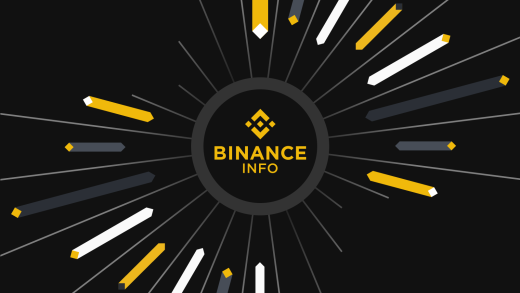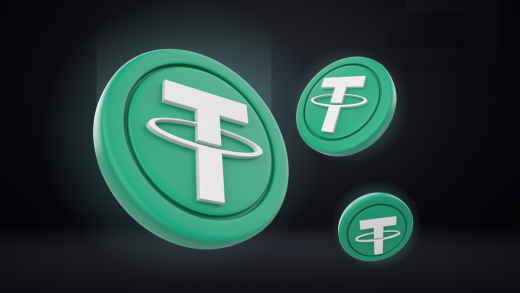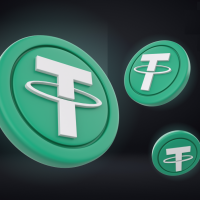Blockchain technology has become one of the most transformative innovations in recent years, revolutionizing industries from finance to healthcare. At its core, blockchain is a decentralized, distributed ledger that records transactions in a secure, transparent, and immutable way. It’s the backbone of cryptocurrencies like Bitcoin and Ethereum, but its potential extends far beyond digital currencies. In this article, we’ll dive into the key concepts of blockchain technology, its uses, benefits, and how it’s shaping the future.
1. What is Blockchain?
A blockchain is a chain of blocks, where each block contains a list of transactions. These blocks are linked together using cryptographic hashes, making it impossible to alter the information without modifying all subsequent blocks, which would require consensus from the entire network.
a. Key Characteristics of Blockchain
- Decentralized: Unlike traditional systems that rely on a central authority (like a bank), blockchain operates on a peer-to-peer network, where no single entity controls the entire system.
- Immutable: Once data is added to the blockchain, it cannot be altered or deleted, ensuring the integrity of the information.
- Transparent: All participants in the network have access to the entire history of transactions, making the system transparent.
- Secure: Blockchain uses cryptographic techniques to secure transactions, ensuring they are safe from tampering and fraud.
b. How Does Blockchain Work?
- Transaction Initiation: A user initiates a transaction, such as sending cryptocurrency to another user.
- Block Creation: The transaction is broadcast to the network, where it’s grouped with other transactions into a block.
- Verification: Network participants, known as nodes, verify the block using consensus algorithms (like Proof of Work or Proof of Stake) to ensure the transaction is legitimate.
- Block Added to the Chain: Once verified, the block is added to the existing chain of blocks, and the transaction is completed.
- Confirmation: The blockchain updates across all nodes, confirming the transaction is valid and permanent.
2. Types of Blockchain
There are different types of blockchain systems, each suited to different use cases:
a. Public Blockchain
- Examples: Bitcoin, Ethereum
- Open to anyone who wants to participate. All transactions are visible to the public, and anyone can join the network as a node.
- It is decentralized, ensuring that no central authority controls it.
b. Private Blockchain
- Examples: Hyperledger, Corda
- A private blockchain restricts access to authorized users only, making it ideal for businesses that need to keep certain data private.
- It’s usually centralized, with one or more organizations controlling the network.
c. Consortium Blockchain
- A hybrid between public and private blockchains, where a group of organizations governs the blockchain instead of a single entity.
- Commonly used in industries like banking, where multiple parties need to transact and share data securely.
3. Blockchain and Cryptocurrencies
Blockchain technology is the foundation of cryptocurrencies. Bitcoin, the first and most well-known cryptocurrency, was introduced in 2009 by an anonymous person or group using the pseudonym Satoshi Nakamoto. Blockchain allows cryptocurrencies to operate without the need for a central authority, making transactions peer-to-peer and decentralized.
a. How Cryptocurrencies Use Blockchain
- Decentralized Ledger: Cryptocurrencies use blockchain to maintain a decentralized ledger of all transactions, eliminating the need for a central bank or financial institution.
- Security: Blockchain’s cryptographic methods ensure that cryptocurrency transactions are secure, reducing the risk of fraud or double-spending.
- Mining: Some cryptocurrencies, like Bitcoin, use a process called mining to add new blocks to the blockchain. Miners solve complex mathematical puzzles to verify transactions and are rewarded with cryptocurrency.
4. Blockchain in Different Industries
Blockchain technology is not limited to cryptocurrencies. Its unique features make it applicable in various sectors:
a. Finance
The financial sector was the first to be disrupted by blockchain. Blockchain allows for fast, secure, and low-cost cross-border payments, eliminating the need for intermediaries like banks.
- Smart Contracts: Platforms like Ethereum introduced smart contracts, which are self-executing contracts with the terms of the agreement written directly into code. These contracts automatically enforce agreements when conditions are met, reducing the need for middlemen.
b. Supply Chain
Blockchain provides end-to-end visibility in supply chains, allowing companies to track products from their origin to the end consumer. This ensures transparency, reduces fraud, and increases efficiency.
- Example: Walmart uses blockchain to track the supply chain of food products, ensuring quality control and reducing waste.
c. Healthcare
In healthcare, blockchain can secure patient records, ensuring that medical data is accurate, immutable, and easily accessible by authorized healthcare providers.
- Example: Hospitals and clinics can use blockchain to store patient health records, ensuring that the data remains secure and only accessible by those with proper authorization.
d. Voting Systems
Blockchain has the potential to transform voting systems by making them more secure, transparent, and resistant to tampering. Each vote can be securely recorded on the blockchain, ensuring that the results are accurate and verifiable.
e. Real Estate
Blockchain can simplify real estate transactions by reducing the need for intermediaries and ensuring that property records are secure and immutable.
- Example: Blockchain-based property ledgers allow for more transparent and secure property transactions, reducing fraud and errors.
5. Consensus Mechanisms in Blockchain
Consensus mechanisms are the protocols that nodes in a blockchain network follow to agree on the validity of transactions. These mechanisms ensure that all participants in the network have a consistent view of the blockchain.
a. Proof of Work (PoW)
Used by Bitcoin, Proof of Work requires nodes (miners) to solve complex mathematical puzzles to add new blocks to the blockchain. This process is energy-intensive but ensures the security and integrity of the network.
b. Proof of Stake (PoS)
Proof of Stake is a less energy-intensive alternative to PoW. In PoS, validators are chosen to add new blocks based on the amount of cryptocurrency they hold and are willing to “stake” as collateral.
- Example: Ethereum is transitioning from PoW to PoS to reduce its energy consumption and improve scalability.
c. Delegated Proof of Stake (DPoS)
In DPoS, users vote for a small number of delegates who are responsible for validating transactions and maintaining the blockchain. This system is faster and more efficient than PoW and PoS.
6. Benefits of Blockchain
Blockchain technology offers several advantages over traditional systems:
a. Security
Blockchain’s cryptographic techniques make it highly secure, reducing the risk of fraud, hacking, or unauthorized access. Each block is linked to the previous block through a cryptographic hash, making tampering nearly impossible.
b. Transparency
Because blockchain is decentralized, all participants have access to the same data. This level of transparency is beneficial in industries like finance and supply chain management, where trust and accuracy are critical.
c. Efficiency
Blockchain reduces the need for intermediaries, speeding up processes like cross-border payments, real estate transactions, and contract execution. Smart contracts further automate and streamline transactions.
d. Immutability
Once data is added to the blockchain, it cannot be altered or deleted. This ensures that the data remains accurate and trustworthy over time, making blockchain ideal for record-keeping.
7. Challenges Facing Blockchain
While blockchain has many benefits, it also faces several challenges that need to be addressed before it can achieve widespread adoption:
a. Scalability
Current blockchain networks, especially those using Proof of Work, struggle with scalability. As more transactions are added, the system can become slow and inefficient. Solutions like sharding and layer-2 protocols are being developed to address this issue.
b. Energy Consumption
Proof of Work-based blockchains, like Bitcoin, consume a massive amount of energy due to the mining process. This has raised concerns about the environmental impact of blockchain technology. Proof of Stake and other consensus mechanisms offer more sustainable alternatives.
c. Regulatory Uncertainty
Governments and regulatory bodies around the world are still grappling with how to regulate blockchain technology and cryptocurrencies. This uncertainty can make it difficult for businesses to adopt blockchain solutions.
d. Interoperability
Most blockchain networks operate independently, making it challenging to transfer assets or data between them. Solutions like cross-chain protocols and bridges are being developed to improve interoperability.
8. The Future of Blockchain
The potential of blockchain technology is enormous, and it’s likely to continue evolving in the coming years. As scalability solutions are developed, energy-efficient consensus mechanisms gain popularity, and regulatory frameworks become clearer, blockchain could become a critical infrastructure for many industries.
a. Decentralized Finance (DeFi)
DeFi is one of the fastest-growing areas in blockchain, allowing users to access financial services like lending, borrowing, and trading without relying on traditional financial institutions.
b. Non-Fungible Tokens (NFTs)
NFTs have gained widespread attention as a way to buy and sell digital assets like art, music, and virtual real estate. Blockchain ensures the authenticity and ownership of these digital assets.
c. Central Bank Digital Currencies (CBDCs)
Governments are exploring the use of blockchain to create Central Bank Digital Currencies (CBDCs), which would offer a government-backed digital alternative to cryptocurrencies.
On The End
Blockchain technology is a revolutionary innovation that has the potential to transform industries by increasing security, transparency, and efficiency. While it was initially developed to support cryptocurrencies, blockchain’s applications are vast, ranging from finance and healthcare to supply chain management and voting systems. As the technology continues to evolve, it will likely play an increasingly important role in shaping the future of how we conduct transactions and store data.















1 Response
[…] All information about Blockchain All information about Blockchain […]